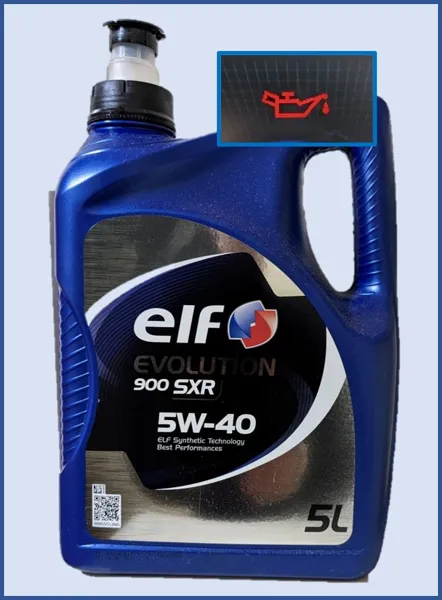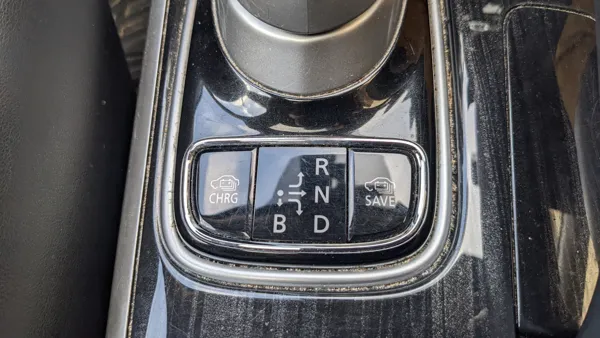You heard it right, if it’s got an engine it needs oil. And if it’s a hybrid vehicle that engine needs all the love you can give it. Read on to find out why.

Oil Change (Easy Step by Step Guide)
I’ve done this procedure for the last 20 years on all my cars, not much different between diesel, petrol and hybrid, motorcycle car etc…
- Get the oil warm, take your car out for a 10 minute drive (this just makes it easier to drain hot runny oil vs cold viscous oil)
- Locate the Drain Plug –
- DO NOT confuse this with the gearbox oil drain plug. The gearbox is usually bolted onto the engine and is bell shaped (bell housing) so you should be able to differentiate the engine from the gearbox.
- Perhaps there is an undertray hiding the drain plug, don’t be afraid to get this black undertray off to reveal the underside of the engine.
- Drain The Oil – Prepare a washing up bowl or similar directly underneath the oil drain plug for the oil to dribble into. Like a pro I use one of these 😉
- Remove the Oil Filter – If you are replacing the filter (advisable)
- Remove the Oil Filler Cap – This will help drain quicker
- Replace the Copper Crush Washer on the Drain Plug – Now put the drain plug back on with your fingers – DO NOT use a spanner at this stage! There is a risk of ‘cross threading’ the oil pan threads if you use a spanner and that is bad news!
- Tighten the Drain Plug – DO NOT overtighten
- Put the New Oil Filter On – I like to fill with a bit of new oil and lube the rubber o ring to help it on
- Fill with the correct oil grade – DO NOT overfill, periodically check the dip stick to ensure you hit the max fill and no more.
- Start the Engine Check for Leaks – On my Plugin Hybrid I force the engine on using the ‘CHRG’ button:

Hybrid Powertrain vs ‘Normal’ Engine
A hybrid powertrain still has an internal combustion engine that needs oil! However, a hybrid is a combination of a gasoline or diesel internal combustion engine (ICE) and an electric motor. The electric motor assists and sometimes substitutes the ICE in accelerating the vehicle and can also capture energy during braking to charge the vehicle’s battery. A normal internal combustion engine powertrain is just the ICE.
There is sometimes a misconception that having a motor assist the ICE negates the need to worry so much about oil changes as the engine can’t be having to work as hard. Whilst this does sound reasonable, it’s actually not true. Read on to here why hybrid engines often have a harder time.
Hybrid Engines Have a Really Tough Time
As you may or may not know I studied automotive engineering at university and drive a hybrid vehicle, so I feel qualified to write about this subject. Forgive the repetitive nature of scenarios 1 and 2 they are essentially the same, the subtle difference is that one journey is a ‘normal’ ICE vehicle, and the other is in a hybrid vehicle.
Scenario 1 – ICE Only Vehicle
- Get in the car, turn the key, engine fires up and idles
- Get your seatbelt on, pull away. You are in a residential area – your speed is low, engine demand is low
- After a few more minutes of driving you accelerate up to 40mph
- By now the engine is beginning to get warm and the oil temperatures are well above the ambient outside temperature.
- You get to a big junction and decide to floor it to slot into a gap
Scenario 2 – Hybrid Vehicle
- Get in the car, ignition on, dashboard ‘ready’ light comes on

- Get your seatbelt on, pull away. You are in a residential area – your speed is low, engine is off (you’re driving on electric)
- After a few more minutes of driving you accelerate up to 40mph (you keep the demand low enough not to trigger the engine to run)
- The engine is still stone cold – it hasn’t started yet
- You get to a big junction and decide to floor it to slot into a gap, at this point the hybrid engine control strategy decides that you have requested so much power that the engine is also needed to accompany the electric motors (check out this post for more info). The engine runs up from nothing to 3000RPM and has to deliver a relatively large amount of power.

If you’ve been following, you can probably guess what I’m going to say next.
Starting an engine and immediately taking it way past idle (with no time to build oil pressure) and then subjecting the poor thing to high load (lots of power) is going to promote far more wear, than if the engine was started and allowed to warm up gradually before being forced to run under high load. In order to give the oil the best chance of effectively lubricating the engine, oil grade as well as frequency of oil changes is critical.
Why the Oil Grade you Choose is Critical
Before we get into it, it’s worth knowing that engine oil is defined by the society of automotive engineers (SAE) as:
- eg. 5W40
- The number before the W is the cold viscosity
- The number after the W is the hot viscosity (oil at 100°C)
If you’d like to know more, hopefully you’ll find this video helpful:
So, you’ve read an understood that hybrid engines have a hard time. That being said, it actually begins to make sense that in the UK, with a climate that hovers around 0°C in winter up to mid 20s in summer, Mitsubishi’s recommend oil for the Outlander PHEV is 5W40. The 5W is a relatively thin winter rating, so will easily flow around the engine even when cold. The 40 is a pretty middle of the range number for when hot.
It is important to consult the owners manual and find out what your recommended oil grade is.
Specialist Training?
No, you don’t need specialist training to do an oil change on a hybrid vehicle. All you need are the right tools and a little bit of know-how.
If you’re comfortable getting your hands dirty and you’re willing to source the right oil, then you can definitely do it yourself. However, if you’re not confident in your abilities or you’d rather leave it to the professionals, then it’s probably best to take it to the main dealer or a specialist for your vehicle.
I would suggest that a well researched oil change following the handbook is likely to be better than a third party garage which may be tempted to just throw in oil from their big batch of ‘one size fits all’.
Finally, please make sure to pull out your car’s handbook and ensure you have the correct oil for your car / climate combination.
What Tools Do I Need?
You will need to safely raise the car in the air. For this
- A ramp or
- A jack & axle stands
Are both appropriate.
There’s usually always a plastic undertray. I tend to prize off the plastic bits with a screwdriver and inevitably break them. If you want to remove and replace like a pro, I suggest you pick up this nifty little kit from Amazon.
Next you will need to identify the engine oil drain, I have a comprehensive set of sockets, spanners and allen keys. Untightening the drain screw will almost certainly come under one of those three categories.
Finally, an oil wrench to undo the filter. I have 3 different ones in my arsenal at home. My go-to filter removal tool is this magical strap that seems to just work for all filter sizes I’ve ever encountered! Failing that, shove a screwdriver through the middle and pray that you can undo it otherwise you are now stuck with a screwdriver stuck through your filter!
How Much Oil?
So you’ve drained the oil, fitted a new filter and remembered to put the drain plug back! Now to refill with fresh oil.
As with oil grade, the owner’s manual for your vehicle should usually suggest how much oil is required. It’s very important NOT to overfill. If you do overfill, you will need to drain the oil out, so just be careful.
I tend to top up on flat level ground continually pouring then checking the dipstick until I reach the appropriate level. When the engine starts, expect some oil to ‘disappear’ into the oil filter. I usually recheck the oil after the engine has run to account for this.
Finally, it’s usually a good idea to run the engine after an oil change. To do this on my vehicle I worked out (eventually) that by pressing the charge button, I can force the ICE engine to run, hope someone finds that helpful!
FAQ
Can I Just Add More Oil When Due An Oil Change?
No, you should not just add more oil when it’s time for an oil change. An oil change involves draining the old oil from the engine and replacing it with fresh oil. The reason for this is that over time, oil breaks down and becomes contaminated with dirt, debris, and other particles. This can cause it to lose its lubricating properties, leading to increased wear and tear on the engine.
Simply adding more oil without draining the old oil can also cause issues. The engine may become overfilled, which can cause it to foam and lead to problems with lubrication. Additionally, the old oil may still contain contaminants that can damage the engine over time.
Can You Feel The Difference After An Oil Change?
I doubt it, I’ve never been able to feel or hear the difference, having said that technically it should be possible. Here are some ways in which a fresh oil change can affect your vehicle:
- Smoother engine operation: Fresh oil can help lubricate the engine components more effectively, which can lead to smoother engine operation and reduced engine noise.
- Improved fuel efficiency: Clean oil can help reduce friction in the engine, which can lead to improved fuel efficiency.
- Better engine performance: Old oil can become contaminated with dirt and debris, which can reduce its ability to lubricate engine components effectively. Fresh oil can help restore engine performance and power.
- Increased engine lifespan: Regular oil changes can help extend the lifespan of your engine by reducing wear and tear on engine components.
It’s important to note that the extent to which you may feel the difference in your vehicle’s performance can depend on a variety of factors, such as the age and condition of your vehicle, the type of oil you use, and how long it has been since your last oil change.
Why Are European All Change Frequencies Less Frequent at Every 10,000 miles +?
While Americans have been accustomed to changing their engine oil every 3,000 miles, many experts believe that these frequent oil changes are not necessary. I don’t honestly believe that the engine construction and use is significantly different. I believe there is likely an over-reliance on the oil change industry.
In contrast, most of the rest of the world has been using longer oil change intervals for decades without any problems. For instance, Mercedes E class models now have an oil change interval of 24,000 miles or two years, whichever comes first. In Europe long oil change intervals sells cars, in USA I think that is not a huge selling point for new vehicles, there is no harm in frequent changes, it’s just probably not neccessary.
Will I Damage My Engine If I Go Over My Oil Change Interval?
Depends how long you leave it! I love watching videos from this youtube channel called ‘Just Rolled In’, check out what happens when you NEVER change your oil:
Conclusion
Some key considerations when it comes to oil changes in a hybrid
- The type of oil recommended by the manufacturer is really important
- The owners manual usually has a lookup based on the climate you drive in
- Frequency is usually time or mileage, whichever comes first, again see owners manual for recommendations and stick to it!
It is important to regularly change the oil in hybrid cars, even though many people think they don’t have to. The electric motor in a hybrid car does not make the car exempt from needing oil changes. In fact, because of the way a hybrid car works, a regular oil change might actually benefit a hybrid car’s engine more than a regular car.

